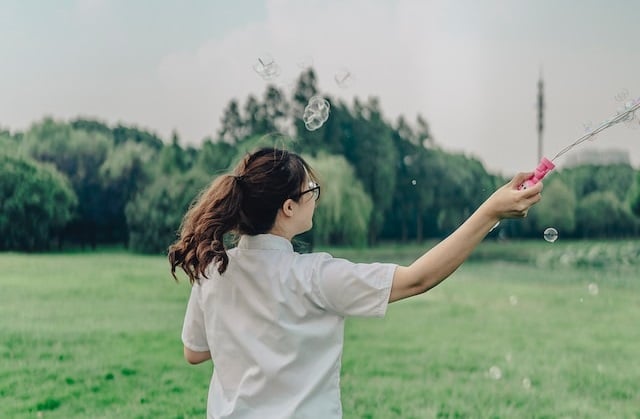 This question came through our webinar last month and I thought we could respond to it in more detail in our newsletter.
This question came through our webinar last month and I thought we could respond to it in more detail in our newsletter.
There can be a high degree of overlap between individuals diagnosed with ADHD and dyslexia. Both dyslexia and ADHD can run in families and both can be associated with creativity, giftedness, and lower working memory.
Dyslexia is usually identified through a “clinical diagnosis” with a professional looking at gaps between certain measures of IQ – like verbal reasoning and comprehension, and lower than expected single word or pseudoword reading (fake words that need to be sounded out and so reflect phonological awareness), naming speed, oral reading accuracy and speed, spelling, and impaired automaticity with writing by hand. An entire book can be devoted to this – but here are just some details to give you the situation.
ADHD is not identified with neuropsychological testing – but instead with a behavioral checklist looking for behaviors that a family member or teachers can observe and make conclusions about – like inattention or impulsivity.
From Shaywitz, et al., 2016:
“Estimates of rates in those with dyslexia and comorbid ADHD range from 9% to as high as 60%, whereas patients initially diagnosed with ADHD have a co-occurrence of dyslexia reported to range from 15% to 45%.”
Another interesting intriguing aspect is that – as we have mentioned previously Cambridge University researchers Taylor and Vestergaard have recently published Developmental Dyslexia: Disorder or Specialization in Exploration?
But did you also know ADHD is also associated with a bias for exploration (Addicott et al., 2020)?
Exploration by itself is not always “good” or “efficient”, but a lack of a tendency to explore is also not always “good” or efficient.” Whether that is good or efficient depends on what your goals are.
There are complex aspects to interpreting the research on dyslexia, ADHD, working memory, reward, learning, and strengths. You wanted to know whether ADHD could affect or minimize strengths – and the answer is – yes, but it also depends – depends on the extent of attention problems and impulsivity and depends on what a person is trying to do. Problems with persisting with activities and organization can interfere with the development of talents – or at least delay them for some time. Working on the weaknesses associated with ADHD will help those strengths to emerge.
There’s an growing sense that high-level creative work requires both divergent thinking, salience (ability to recognize something that’s interesting), and executive function (analyzing, organizing, executing plans). So to realize high levels of creative achievement, executive function will need to be developed.
There is a great deal of brain organization and reorganization that takes place from childhood to young adulthood and sometimes development may go backwards for awhile before it goes forward.
What I would do is find something that your student loves, and encourage them to develop this love to a high degree – whether its finding a mentor or peers with this interest and expertise.
Success can breed success and micro-expertise can grow. Encourage grow, trying difficult things, failing, and trying again. that will improve attention and perseverance and resilience.
Intrinsic motivation is a huge force to try to latch onto. It will help skills grow naturally and increase the likelihood of success.
As a group, kids diagnosed with ADHD seem more reward-sensitive than their peers who are not. As a result, if there’s something you really want them to do because it’s good for them, but they have no interest in it, then provide and external short-term reward. A good reward in this setting is something that has a quick pay-off (cookie, game time, playing with friends, avoiding a chore), not something that would be rewarding in weeks or longer.
Don’t provide an external reward for something that they already find interesting. Researchers have discovered that providing external rewards dampens the intrinsic rewards and enjoyment of the tasks.
In fact, protect time with things they love to do (whether it’s building or drawing or learning how a computer game works) – it helps intrinsic motivation grow and it also builds focus, persistence, and resilience.
If you see a student getting frustrated at difficult tasks, try to troubleshoot the difficulty. See if scaffolding and more instruction improves persistence. Is what they are trying to do, too difficult? If so, is there a way you can help (like scribing a creative story) or watching a video to a particular tasks.
The nice thing about finding a way to get a student to persist at something is that it can create a positive feedback loop of more success, more enjoyment, stronger persistence and difficulty tasks, and so on and it can still be a lot of fun for them.
The legendary photographer Ansel Adams said this about his childhood and father:
“I often wonder at the strength and courage my father had in taking me out of the traditional school situation and providing me with these extraordinary learning experiences. I am certain he established the positive direction of my life that otherwise, given my native hyperactivity, could have been confused and catastrophic. I trace who I am and the direction of my development to those years of growing up in our house on the dunes, propelled especially by an internal spark tenderly kept alive and glowing by my father.”
Ansel’s father did try him in school until he decided he would make more progress with tutors and learning through experiences like going through the exhibits at the World’s Fair. The first activity that motivated him to stay in one place was playing the piano. The next big event in his life was getting a Brownie camera.. and he was hooked for life.














